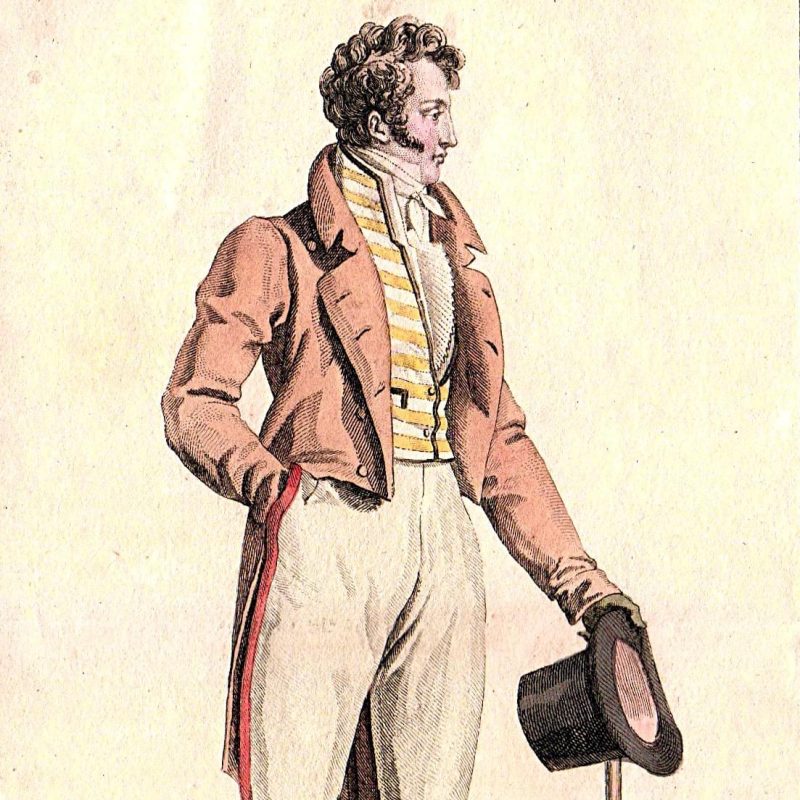The Regency era saw the rise of the dandy, epitomised by Beau Brummell, whose obsession with fashion revolutionised men’s clothing. Brummell’s emphasis on simplicity, fit, and cleanliness marked a departure from the ostentatious styles of the previous century. His influence extended beyond fashion, shaping the ideals of masculinity and social behaviour in Regency England.
Beau Brummell: The Original Dandy

George ‘Beau’ Brummell (1778–1840) was a former army officer who became the arbiter of men’s fashion in Regency London. Unlike the flamboyant styles of the 18th century, which featured elaborate embroidery, bright colours, and powdered wigs, Brummell championed a more understated aesthetic. His signature look included a dark tailcoat, perfectly fitted trousers, a crisp white shirt, and an immaculately tied cravat. He believed that true elegance lay in simplicity and attention to detail.
Brummell’s influence was so profound that even the Prince Regent (later George IV) sought his advice on matters of dress. His daily routine, which reportedly included hours of grooming and multiple changes of clothing, set a new standard for male elegance. Brummell’s mantra, ‘If people turn to look at you in the street, you are not well dressed’, encapsulated his philosophy of understated sophistication.
The Dandy Movement
The rise of the dandy was not just about fashion; it was a cultural phenomenon that reflected broader social changes. The dandy represented a new ideal of masculinity — one that valued refinement, wit, and self-control over brute strength or inherited privilege. This was particularly appealing in a society where social mobility was becoming increasingly possible.
Dandies like Brummell were also known for their sharp wit and social acumen. They frequented exclusive clubs like White’s and Brooks’, where they engaged in witty banter and high-stakes gambling. Their ability to navigate the complexities of high society was as important as their sartorial choices.
The Legacy of the Dandy

Brummell’s influence extended far beyond his lifetime. His emphasis on fit and tailoring laid the groundwork for modern menswear. The dark suit, white shirt, and necktie that he popularised remain staples of men’s fashion to this day. The dandy movement also paved the way for later fashion icons, from Oscar Wilde to Tom Ford.
However, Brummell’s life was not without tragedy. His extravagant lifestyle eventually led to financial ruin, and he spent his final years in exile in France, suffering from syphilis. Despite his downfall, his legacy endures as a symbol of elegance and refinement.
Conclusion
The rise of the dandy, epitomized by Beau Brummell, was a defining feature of Regency society. It represented a shift in ideals of masculinity and social behaviour, emphasising refinement and self-presentation over ostentation. Brummell’s influence on fashion and culture remains evident today, reminding us of the enduring power of style.
References for Further Reading:

Leave a Reply